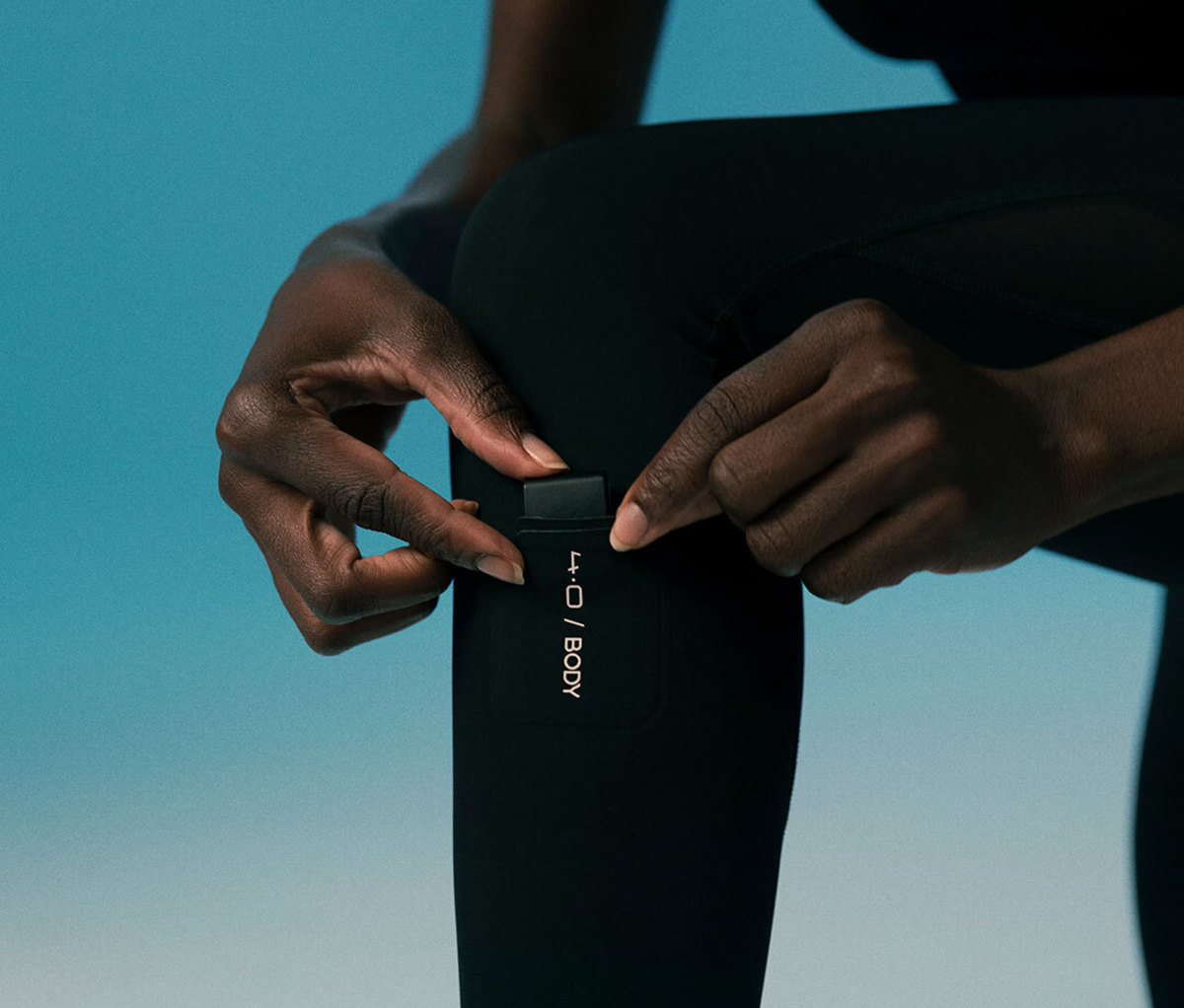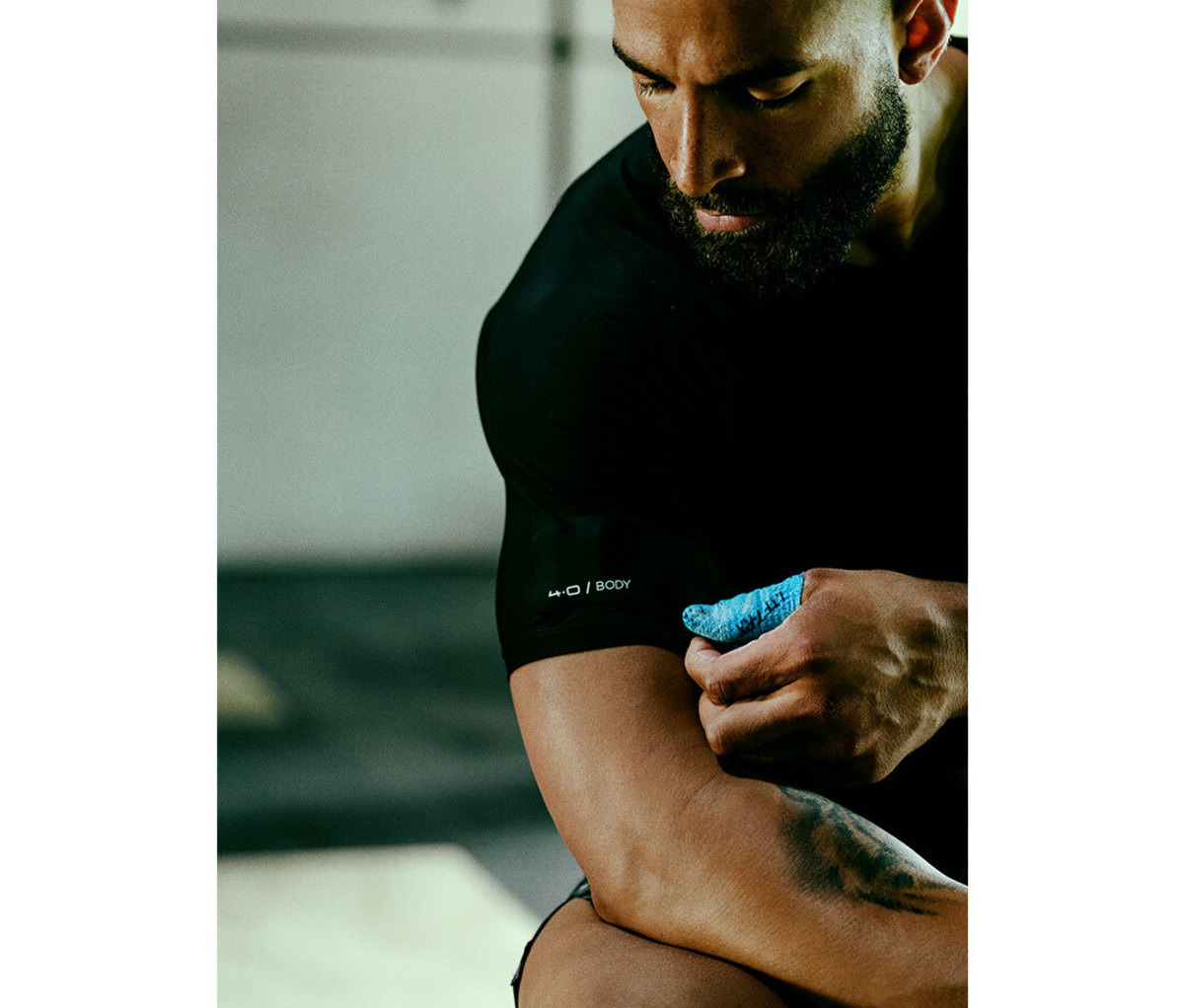If you don’t already have one fixed to your wrist, you’ve likely seen the WHOOP strap on all matter of athletes. The wearable tracks workouts, sleep, and recovery without all the bells and whistles of a supercomputer on your wrist to provide deep insights into your overall health, performance, and well-being. Its newest iteration, WHOOP 4.0 is now 33 percent smaller with better battery life, and an impressive list of new features. The upgraded sensor ups the ante by letting you don the device off your wrist with WHOOP-compatible apparel—coined WHOOP Body.
To figure out where, besides the wrist, the WHOOP sensor could take accurate readings, WHOOP’s engineers looked for spots where blood flow beneath the skin was close enough to the surface to track, factoring in muscle and tendon movement, as well as how the device is secured against the skin to reduce signal noise and movement. Simply remove the tracker from its wristband, and slide into the specified pocket (more on this below).

“We spent years developing the technology and conducted thousands of wear tests to launch this first line of technical garments,” says Alex Jacobs, senior manager of Public Relations & Communications. “WHOOP uses a PPG sensor to capture heart rate data and WHOOP’s validations focused on getting quality PPG signals through the body with the new WHOOP 4.0.”
WHOOP Body uses an algorithmic advancement that allows WHOOP 4.0 to detect the sensor’s location on not only the wrist, but also the leg, arm, waist, chest and torso—to continuously capture data in those locations.
Jacobs said developing sizing was crucial, and went beyond small, medium, and large.
“We had to look at how a wearable device can seamlessly integrate with different calf sizes or torsos,” said Jacobs. “We also tested WHOOP apparel and WHOOP 4.0 across a wide variety of demographics, sizes, skin types, fitness levels, and ages. We set out to create a wearable that’s finally wearable.”

All of WHOOP 4.0’s new features are legit. It has an upgraded sensor that balances green and infrared lights with five LEDs, four photodiodes, and advanced algorithms to provide more precise and accurate heart-rate measurements.
The sensor now tracks blood oxygen, skin temperature, and has a vibrating alarm (set the desired time in the app) that’ll wake you with gentle vibrations. And if your schedule has some leeway, say 15 minutes after your chosen wakeup time, the sensor can detect if you’re in a critical sleep cycle, where a few more zzz’s will improve your recovery, and let you sleep in. You can also set it to vibrate when you’ve reached optimal strain.
Finally, WHOOP 4.0 makes it easier to share your health and fitness data than ever before. You can now export a long-term health report to share metrics with a doctor or coach.

WHOOP calls itself the only “truly wearable” health and fitness sensor because you charge WHOOP’s charging pack via USB-C, then it disconnects from the wall or your computer, and slides over WHOOP while it’s on your wrist—there’s no need to remove the sensor.
The battery pack itself has been greatly improved. It uses NFC technology to charge the device, not copper contacts as before. It’s waterproof, and LEDs on top let you know if it’s time to recharge the battery pack or if it’s good to go. The WHOOP sensor also has LEDs on the side indicating charge level. New straps are more comfortable and easier to swap to match your outfit or mood, too.
WHOOP Body comes in two collections: Training and Intimates. For men, the training collection consists of compression tops and shorts, while Intimates includes boxer shorts offered in both pima cotton and a poly-Lycra blend.
WHOOP Body ranges from $54-$109. WHOOP Strap, which includes the strap, sensor, and buckle, come with the membership, which starts at $18/month; learn more at join.whoop.com.
Learn More and Get Itfrom Men's Journal https://ift.tt/3co5tw0


0 comments